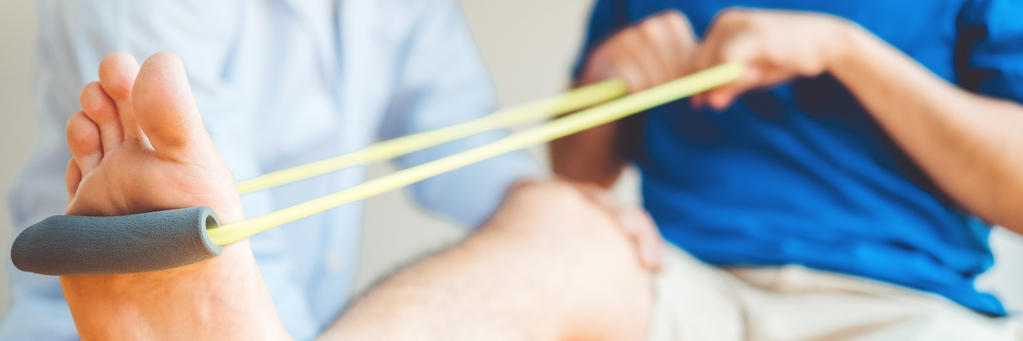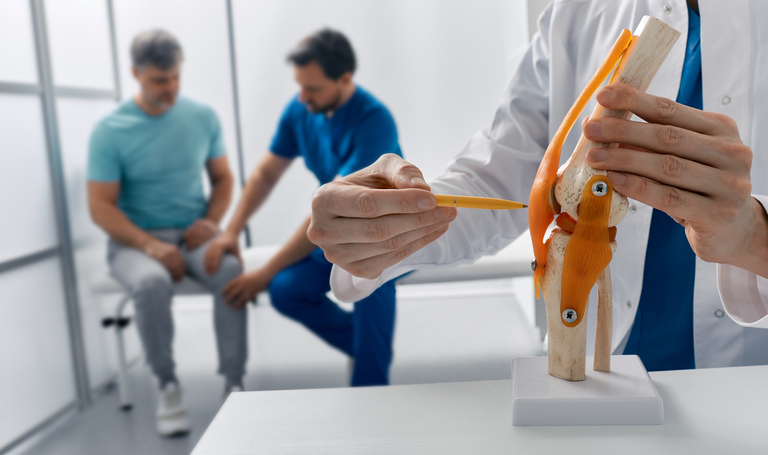
Welcome to our article on 'Revitalizing Your Recovery Injuries and Their Effective Management: 10 Steps in the Injury Recovery Process'. This comprehensive guide will explore essential techniques and strategies to promote healing and regain strength during the recovery journey. From initial injury management to personalized rehabilitation plans, we will delve into the intricacies of the recovery process. By implementing effective management strategies and adopting preventative habits, we can optimize our chances of a successful return to sports and daily activities. Join us as we provide valuable insights and practical advice to athletes and individuals seeking to enhance their recovery and overall well-being.
Key Takeaways
Warm up before engaging in sports activities and cool down properly after exercise or sports to prevent injuries and promote recovery.
Rest immediately after experiencing an injury and follow the RICE method (Rest, Ice, Compression, Elevation) to control inflammation and promote healing.
Seek medical attention if there is a lack of improvement after two weeks of rest or if the injury is severe.
Ensure proper nutrition and consider supplements, such as protein-rich foods, vitamin C-rich foods, omega-3 fats, calcium-rich foods, and adequate vitamin D, to aid in tissue rebuilding and promote healing.

What is the fastest way to recover from an injury?
The speediest path to recovery from an injury involves a combination of rest, proper rehabilitation protocols, and following healthcare professionals' guidance. When faced with an injury, it is crucial to prioritize rest to allow the body to heal. This means refraining from activities that may worsen the condition and seeking timely medical attention. Additionally, properly following rehabilitation protocols prescribed by healthcare professionals is essential for a successful recovery.
Recovering from an injury requires a personalized approach, as individual factors can greatly impact the healing process. Seeking guidance from a physical therapist or doctor is crucial to understanding the complexity of the human body and receiving a tailored plan for recovery. It is important to strike a balance between rest and exercise, as staying in shape without compromising the recovery process is key. However, following professional advice and avoiding increasing exercise intensity prematurely is vital.
During the recovery process, setbacks may occur. It is important to be aware of these setbacks and take prompt action to prevent further worsening of the condition. Monitoring progress and seeking help when needed is essential for a smooth recovery.
Ultimately, a full recovery is indicated by the absence of pain and swelling, as well as regaining full range of motion in the injured area. This confirmation of readiness for normal activities should be monitored and assessed by healthcare professionals.
Injury prevention is also crucial in maintaining long-term well-being. Implementing preventative habits, such as exercise and proper response to minor injuries, can significantly reduce the risk of future injuries. Various programs are available to educate individuals on injury prevention and ensure their overall health and wellness.
How do athletes heal so fast?
Athletes are known for their remarkable ability to heal quickly, attributed to their physical conditioning, access to top-notch medical care, and adherence to comprehensive rehabilitation protocols. Their dedication to their sport and craft and commitment to their bodies allow them to recover from injuries acceleratedly.
One of the main reasons athletes heal knee injuries so quickly is their physical conditioning. Their bodies are finely tuned machines with strong muscles, flexible joints, and efficient cardiovascular systems. This fitness level allows them to bounce back from injuries faster than the average person.
Additionally, athletes have access to top-notch medical care. They work with a team of healthcare professionals specializing in sports medicine, providing them with the best treatment options. Whether it's physical therapy, surgery, or alternative therapies, athletes can access the latest advancements in the field.
Furthermore, athletes adhere to comprehensive rehabilitation protocols. They understand the importance of following a structured plan to regain strength and mobility after an injury. This includes regular physical therapy sessions, exercises, and rest periods to allow the body to heal properly.
How can I speed up the recovery from a muscle injury?
To optimize the healing process of a muscle injury, implementing a combination of proper rest, targeted rehabilitation exercises, and following the guidance of a healthcare professional can help expedite the recovery timeline. Rest is crucial in healing the injured muscle and avoiding further damage. Avoiding activities that may strain or worsen the injury during the initial stage is important. Applying ice to the affected area can help reduce inflammation and pain. Compression and elevation can also aid in reducing swelling and promoting healing. Light activity or exercises that do not aggravate the injury can be gradually introduced to assess the severity of the injury. However, consulting with a healthcare professional, such as a physical therapist, is essential to ensure proper guidance throughout the recovery process. Each person's body and injury are unique, and a personalized approach is necessary for effective healing. It is important to be aware of setbacks and seek further treatment if rehabilitation stalls. Regaining strength should be done under the supervision of a healthcare professional to prevent re-injury. Full recovery indicators include the absence of pain and swelling and the restoration of full range of motion in the injured muscle. By following these steps and seeking professional guidance, individuals can expedite the recovery of a muscle injury and regain their optimal physical well-being.

How long do most injuries take to heal?
The healing duration for most injuries varies depending on the severity and type of injury, as well as individual factors such as age, overall health, and adherence to proper rehabilitation protocols. Minor injuries, such as strains or sprains, can typically heal within a few days to a couple of weeks with proper rest, ice, compression, and elevation (RICE) therapy. More serious injuries, such as fractures or torn ligaments, may take several weeks or months to heal completely.
Age and overall health play a significant role in the healing process. Younger individuals recover more quickly due to their higher metabolic rates and better circulation. Older individuals may experience slower healing due to reduced blood flow and decreased tissue elasticity. Additionally, individuals with underlying health conditions, such as diabetes or autoimmune disorders, may have prolonged healing times.
Adherence to proper rehabilitation protocols is crucial for optimal healing. Following the guidance of healthcare professionals, including physical therapists and doctors, can help ensure that the injured area is properly rehabilitated and strengthened. This may involve a combination of exercises, stretches, and other therapeutic techniques to promote healing and prevent future injuries.
Can you fully recover from an injury?
Full recovery from an injury is possible with proper medical guidance, adherence to rehabilitation protocols, and a comprehensive approach to healing. When individuals face an injury, it is natural to wonder if they will fully recover and regain their pre-injury capabilities. The answer is yes; achieving full recovery with the right approach is possible.
During the recovery process, seeking medical guidance from healthcare professionals specializing in injury management is essential. They will provide expert advice and create a personalized treatment plan tailored to the individual's needs. Adherence to rehabilitation protocols is crucial as it allows for the gradual restoration of strength, flexibility, and function.
A comprehensive approach to healing involves physical rehabilitation and addressing the emotional and other mental health aspects of the recovery process. This may include counseling, stress management techniques, and support from family and friends.
What is it called when you are recovering from an injury?
The recuperation period following an injury is commonly referred to as the rehabilitation phase. During this phase, individuals focus on regaining their strength, mobility, and function to return to normal activities. Rehabilitation is a crucial step in recovery and requires medical intervention, physical therapy, and self-care.
The goal of rehabilitation is to promote healing, prevent further injury, and improve overall well-being. It involves various activities such as therapeutic exercises, manual therapy, and modalities like heat and cold therapy. Additionally, individuals may receive education on proper body mechanics, injury prevention strategies, and lifestyle modifications to support their recovery.
The rehabilitation phase requires dedication, patience, and collaboration between the injured individual, healthcare professionals, and support systems. It is important to follow the guidance and recommendations of medical professionals to ensure a safe and effective recovery. Additionally, self-care practices such as rest, proper nutrition, and stress management play a crucial role in rehabilitation.
How long does it take to recover from an injury?
The duration of recovery from an injury can vary depending on factors such as the type and severity of the injury, individual healing capabilities, and adherence to a comprehensive rehabilitation plan. Each person's body responds differently to injuries, and it is important to consider these individual factors when estimating recovery time.
Minor injuries such as sprains or strains may take around two weeks to heal with proper rest and care. However, more severe injuries such as fractures or torn ligaments may require several months or surgery to recover fully.
Individual healing capabilities play a significant role in the recovery process. Age, overall health, and previous injuries can impact the body's healing ability. Additionally, the presence of underlying medical conditions can prolong the recovery period.
Adherence to a comprehensive rehabilitation plan is crucial for a successful recovery. This includes following healthcare professionals' guidance, attending physical therapy sessions, and diligently performing prescribed exercises and stretches. Failure to comply with the recommended rehabilitation plan can result in a longer recovery or reinjury.
It is important to note that every injury is unique, and recovery times can vary. It is advisable to consult with a healthcare professional to assess the expected recovery duration for a specific injury accurately.
What are the 4 stages of recovery after an injury?
The 4 stages of recovery after an injury are the initial injury stage, rest and ice, compression and elevation, and light activity/exercising. In the initial injury stage, it is important to respond cautiously to avoid worsening the condition. Simple tasks can strain the injury, so taking time before meeting with a physical therapist or doctor is necessary. Rest and ice are crucial during this stage. Rest the affected area for a few days, even if unsure of the severity of the injury. Icing the injury is always recommended; if ice is unavailable, a frozen bag of food can be used as a substitute. Compression and elevation are also important. Compress and elevate the injury immediately, but be cautious not to wrap too tightly. This is part of the RICE method (rest, ice, compression, elevation), which helps reduce swelling and promote healing. Lastly, light activity/exercise can be introduced to test the affected area. However, avoiding the regular workout regimen and stopping exercising if discomfort or unusual pain occurs is important. This stage helps assess the severity of the injury. Understanding these stages is essential for effective injury recovery. Transitioning into the next section, it is important to ask: what is the best way and how to recover from injury faster to recover from an injury?
What is the best way to recover from an injury?
To facilitate optimal recovery from an injury, it is essential to follow a comprehensive rehabilitation plan tailored to the individual's specific needs and guided by the expertise of healthcare professionals. The best way to recover from an injury involves several key steps. Firstly, it is important to completely rest the injured body part to allow for complete healing. Immobilizing the injured joint motion or area with a splint or brace can help prevent further damage. Avoiding the use of the injured body part is crucial to prevent aggravating the injury and turning it into a chronic condition.
Additionally, seeking a proper diagnosis from a healthcare professional is essential to understand the injury's nature and focus the rehabilitation strategy for faster recovery. This accurate diagnosis helps with mental preparation during the recovery process. It is also important to maintain proper nutrition and consider supplements that support healing, such as protein-rich foods, vitamin C-rich foods, omega-3 fats, calcium-rich foods, and adequate vitamin D.
Furthermore, following the guidance of a physical therapist or doctor is crucial in balancing recovery and exercise. They can provide personalized advice and help you regain strength slowly and safely. It is also important to be aware of setbacks that may occur during the recovery process. Monitoring progress and seeking further treatment if necessary, can prevent the worsening of the condition.
What helps injuries heal faster?
Factors such as proper nutrition, adequate rest, and following a comprehensive rehabilitation plan guided by healthcare professionals can contribute to faster healing of injuries. When it comes to healing injuries, the body requires the right nutrients to support repairing and regenerating damaged tissues. A diet rich in protein, vitamins C and D, and omega-3 fats can aid in tissue rebuilding, reduce inflammation, and enhance bone healing. In addition to nutrition, giving the body enough time to rest is crucial. Resting allows the injured area to heal without further strain or aggravation. Following a rehabilitation plan tailored to the specific injury is also important, as guided by healthcare professionals. This may involve exercises to improve strength, flexibility, range of motion, and modalities such as heat or cold therapy, ultrasound, or electrical stimulation. Following the rehabilitation plan consistently and seeking guidance from healthcare professionals can help ensure a faster and more efficient healing process. By prioritizing proper nutrition, adequate rest, and comprehensive rehabilitation, individuals can contribute to their healing and recovery, serving their well-being and enabling them to continue serving others.

Embrace RICE Therapy
When managing sports injuries, RICE therapy is one of the most effective methods. RICE stands for Rest, Ice, Compression, and Elevation. This simple yet powerful approach can help minimize pain and inflammation, promote healing, and accelerate recovery.
Rest is the first step in RICE therapy and involves avoiding any activities that may further aggravate the original injury part. Giving the injured body part adequate rest allows it to heal without additional stress or strain.
Ice is the next component of RICE therapy, and it involves applying a cold pack of ice to the injured area. This helps reduce inflammation, swelling, and pain. Cover the ice pack with a towel to protect the skin and apply it for 15-20 minutes every 2-3 hours.
Compression is another crucial part of RICE therapy. By wrapping the affected area with an elastic medical bandage, you can help reduce swelling and provide support to the injured tissues.
Lastly, elevation involves raising the injured body part above the level of your heart. This helps minimize swelling by allowing excess fluid to drain away from the injured area.
Embracing RICE therapy can significantly contribute to healing and promote faster recovery. However, effective pain and inflammation management is also essential. Let's explore the art of pain and inflammation management to enhance your injury recovery journey further.
The Art of Pain and Inflammation Management
Pain and inflammation management is crucial in sports injuries' overall healing and recovery process. When an athlete sustains an injury, pain, and inflammation are common symptoms that can significantly impact their ability to participate in sports and daily activities. Effectively managing pain and inflammation is essential not only for relieving discomfort but also for promoting optimal healing.
Various pain and inflammation management strategies can be employed during the recovery process. Non-steroidal anti-inflammatory drugs (NSAIDs) such as ibuprofen can help alleviate pain and reduce inflammation. Physical therapy techniques, such as ice and heat therapy, can also be beneficial in managing these symptoms. Ice therapy, in particular, can help reduce swelling and numb the area, providing temporary relief. On the other hand, heat therapy can increase blood flow to the injured area, promoting healing.
Additionally, rest and elevation of the injured body part can help reduce pain and prevent swelling further. Resting allows the body to heal and prevents further damage, while elevation helps improve blood flow and reduce fluid buildup. Compression, through compression bandages or sleeves, can also manage pain and inflammation by reducing swelling and supporting the injured area.
It is important for athletes to work closely with healthcare professionals, such as physical therapists or sports medicine physicians, to develop a comprehensive pain and inflammation management plan tailored to their specific injury. By effectively managing pain and inflammation, athletes can facilitate healing and maximize their chances of a successful recovery.
Mobilization and Gentle Exercise
Mustering and gentle exercise play a crucial role in recovering from an injury. These activities help restore the affected area's flexibility, strength, and range of motion. Mobilization involves moving the injured body part controlled and pain-free, while gentle exercise focuses on gradually increasing the intensity and duration of physical activity.
Mobilization and gentle exercise are essential for preventing muscle stiffness, joint immobility, and muscle atrophy during recovery. They also promote blood circulation, which aids in delivering nutrients and oxygen to the injured tissues, facilitating healing.
When engaging in mobilization and gentle exercise, it is important to follow the guidance of a healthcare professional or physical therapist. They can provide personalized recommendations based on the specific injury and individual factors. It is crucial to start with low-impact activities and gradually progress to more challenging exercises as the healing progresses.
Physical Therapy and Rehabilitation
Physical therapy and rehabilitation are integral to the recovery process, as they focus on restoring function, back strength training, improving mobility, and minimizing the risk of re-injury. These therapies provide a structured and individualized approach to help individuals regain strength, flexibility, and overall physical well-being after an injury.
Physical therapy involves various techniques such as exercise, manual therapy, and modalities to address specific impairments and functional limitations. It aims to improve the range of motion, reduce pain, increase muscle strength, and enhance overall physical performance. The therapist will create a customized treatment plan based on the individual's specific needs and goals.
On the other hand, rehabilitation focuses on the overall recovery and reintegration of individuals into their daily lives and activities. It includes physical therapy and psychological, social, and vocational support. Rehabilitation programs may involve a multidisciplinary team of healthcare professionals, including physical therapists, occupational therapists, psychologists, and social workers, who work collaboratively to provide comprehensive care.
The Power of Adequate Hydration and Nutrition
Proper hydration and nutrition are essential to the recovery process, as they are significant in supporting optimal healing, promoting tissue repair, and enhancing overall physical well-being. When the body experiences an injury, it requires more nutrients and fluids to facilitate the healing process. Adequate hydration is crucial for maintaining proper blood flow and delivering essential nutrients to the injured area. It also helps flush out toxins and reduce inflammation, aiding pain management and accelerating healing.
In addition to hydration, nutrition plays a vital role in the recovery process. A balanced diet rich in vitamins, minerals, and antioxidants provides the necessary building blocks for tissue repair and regeneration. Protein is particularly important as it supports muscle recovery and helps to rebuild damaged tissues. Foods high in vitamin C and omega-3 fatty acids have anti-inflammatory properties that can reduce swelling and promote healing.
For individuals serving others in a caregiving capacity, it is important to emphasize the importance of proper hydration and nutrition during recovery. Encouraging individuals to drink enough fluids and consume a nutrient-dense diet can greatly support their healing journey. Providing education on healthy food choices and offering support in meal planning can also contribute to their overall well-being. By prioritizing hydration and nutrition, caregivers can play a significant role in facilitating recovery and promoting optimal healing for those they serve.
Psychological Support and Coping Mechanisms
Psychological Support and Coping Mechanisms play a significant role in the injury recovery. Dealing with a sports injury can be mentally challenging, as it often involves physical limitations, setbacks, and the fear of returning to previous performance levels. Therefore, it is crucial to provide injured athletes with the necessary psychological support to help them navigate through this difficult period.
One effective coping mechanism is to encourage athletes to maintain a positive mindset. This involves focusing on the progress made during the recovery process rather than dwelling on setbacks. Reminding athletes of their previous successes can help boost their confidence and motivation.
Additionally, providing athletes with a support system is essential. This can include family, friends, coaches, and healthcare professionals who can offer encouragement, guidance, and a listening ear. Having someone to talk to about their frustrations and fears can help athletes feel understood and supported.
Furthermore, setting realistic goals and expectations is crucial for psychological well-being. Athletes should be encouraged to focus on small milestones and celebrate their achievements during training. This can help maintain motivation and prevent feelings of frustration or hopelessness.
Lastly, implementing relaxation techniques such as deep breathing exercises, visualization, and meditation can help athletes manage stress and anxiety. These techniques can promote a sense of calmness and aid in the healing process.
Providing psychological support and teaching effective coping mechanisms can significantly enhance injury recovery. By addressing the mental aspect of the injury, athletes can better navigate the challenges and emerge physically and mentally stronger.
The Role of Rest and Sleep
Rest and sleep are crucial components in the overall healing process, allowing the body to repair and regenerate damaged tissues, restore energy levels, and optimize recovery from sports injuries. The body requires time to heal and restore itself when an injury occurs. Resting allows the injured area to recover without further strain or stress. It allows the body to focus on repairing the damaged tissues and reducing inflammation.
Sleep is equally important in the recovery process. During sleep, the body goes through various restorative processes, including releasing growth hormones that aid in tissue repair. During deep sleep, the body experiences its highest rate of healing and regeneration. Lack of quality sleep can hinder the recovery process and delay healing.
For individuals who desire to serve others, it is important to prioritize rest and sleep as part of the injury recovery process. Individuals can optimize their recovery and ensure a faster return to their activities by allowing the body the time it needs to heal and regenerate. Creating a conducive environment for restful sleep is essential, such as establishing a regular sleep schedule, reducing exposure to stimulating activities before bed, and creating a comfortable sleep environment. By prioritizing rest and sleep, individuals can effectively serve others by caring for their well-being and facilitating recovery.
Frequently Asked Questions
What Are Some Effective Strategies for Speeding Up Muscle Injury Recovery?
Effective strategies for speeding up the recovery of a muscle injury include rest, ice, compression, and elevation (RICE method), light activity/exercising to assess the severity of the injury, and seeking professional guidance for personalized healing.
How Long Does It Typically Take for Most Injuries to Heal Fully?
The duration of full healing for most injuries varies depending on the type and severity of the injury. It can range from a few weeks to several months. Timely medical attention and following proper rehabilitation protocols are essential for optimal recovery.
Is It Possible to Fully Recover From an Injury?
Yes, it is possible to recover from an injury fully. With proper medical care, rehabilitation, and adherence to a personalized recovery plan, individuals can regain strength, mobility, and function in the affected area.
What Are the Four Stages of Recovery After an Injury?
The four stages of recovery after an injury are the initial injury stage, rest and ice, compression and elevation, and light activity/exercising. Each stage plays a crucial role in the overall healing process.
What Are Some Ways to Effectively Manage Pain and Inflammation During the Recovery Process?
During the recovery process, effective management of pain and inflammation can be achieved through a combination of rest, ice, compression, elevation, and medication as prescribed by a healthcare professional. Proper adherence to these measures helps promote healing and reduce discomfort.
 Medically reviewed by
Medically reviewed by 





